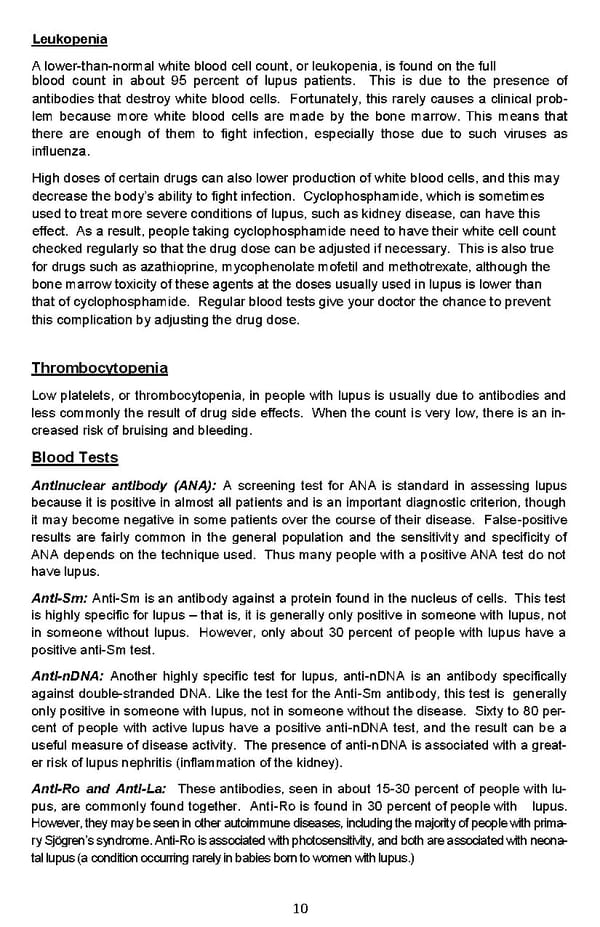Leukopenia A lower-than-normal white blood cell count, or leukopenia, is found on the full blood count in about 95 percent of lupus patients. This is due to the presence of antibodies that destroy white blood cells. Fortunately, this rarely causes a clinical prob- lem because more white blood cells are made by the bone marrow. This means that there are enough of them to fight infection, especially those due to such viruses as influenza. High doses of certain drugs can also lower production of white blood cells, and this may decrease the body’s ability to fight infection. Cyclophosphamide, which is sometimes used to treat more severe conditions of lupus, such as kidney disease, can have this effect. As a result, people taking cyclophosphamide need to have their white cell count checked regularly so that the drug dose can be adjusted if necessary. This is also true for drugs such as azathioprine, mycophenolate mofetil and methotrexate, although the bone marrow toxicity of these agents at the doses usually used in lupus is lower than that of cyclophosphamide. Regular blood tests give your doctor the chance to prevent this complication by adjusting the drug dose. Thrombocytopenia Low platelets, or thrombocytopenia, in people with lupus is usually due to antibodies and less commonly the result of drug side effects. When the count is very low, there is an in- creased risk of bruising and bleeding. Blood Tests Antinuclear antibody (ANA): A screening test for ANA is standard in assessing lupus because it is positive in almost all patients and is an important diagnostic criterion, though it may become negative in some patients over the course of their disease. False-positive results are fairly common in the general population and the sensitivity and specificity of ANA depends on the technique used. Thus many people with a positive ANA test do not have lupus. Anti-Sm: Anti-Sm is an antibody against a protein found in the nucleus of cells. This test is highly specific for lupus – that is, it is generally only positive in someone with lupus, not in someone without lupus. However, only about 30 percent of people with lupus have a positive anti-Sm test. Anti-nDNA: Another highly specific test for lupus, anti-nDNA is an antibody specifically against double-stranded DNA. Like the test for the Anti-Sm antibody, this test is generally only positive in someone with lupus, not in someone without the disease. Sixty to 80 per- cent of people with active lupus have a positive anti-nDNA test, and the result can be a useful measure of disease activity. The presence of anti-nDNA is associated with a great- er risk of lupus nephritis (inflammation of the kidney). Anti-Ro and Anti-La: These antibodies, seen in about 15-30 percent of people with lu- pus, are commonly found together. Anti-Ro is found in 30 percent of people with lupus. However, they may be seen in other autoimmune diseases, including the majority of people with prima- ry Sjögren’s syndrome. Anti-Ro is associated with photosensitivity, and both are associated with neona- tal lupus (a condition occurring rarely in babies born to women with lupus.) 10
 Living Well With Lupus Facts Booklet Page 9 Page 11
Living Well With Lupus Facts Booklet Page 9 Page 11